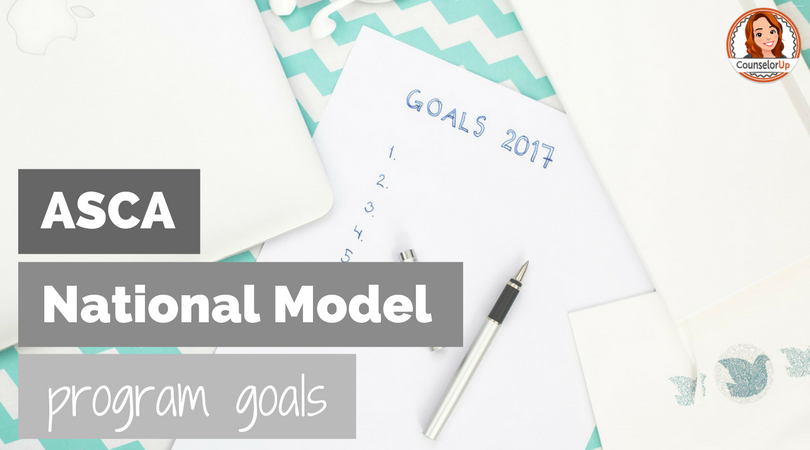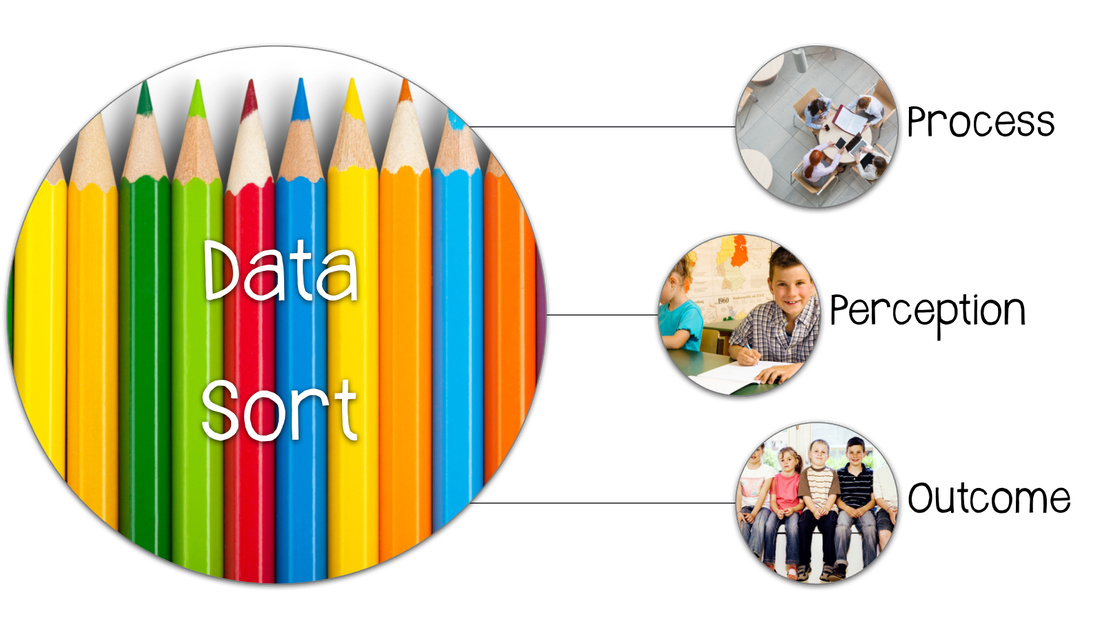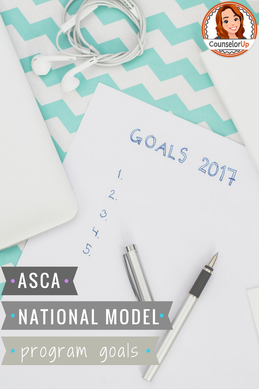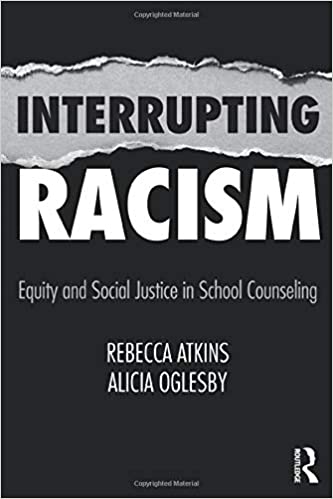Video Transcript
Program goals are written in SMART format. They are Specific, Measurable, Attainable, Results-oriented, and time bound. The goal statement should be clear and concise. You do not need to explain your goal or include how you are going to work to obtain the goal. Program goals are always centered around outcome data. Outcome data is achievement, attendance, and behavior data. Other data like pre/post tests or needs assessments may inform the outcome goal but the primary focus of the goal should be outcome data.
The first step in writing your program goals is to look at the priorities of the school. The school improvement plan is a great place to start. If you do not sit on your school improvement team, you can read the written plan or make an appointment with an administrator or other building leader to discuss the SIP plan. It’s important for the school counselor to think about how their work will inform the overall goals of the school. For example, if achievement is a school priority, the counselor might work with students on academic skills, appropriate scheduling, or class attendance.
The second step is to disaggregate data and look at achievement, attendance, and behavior discrepancies by subgroup or category. Subgroup gaps could be by race or ethnicity, grade, gender, etc. Needs may also be identified by category like a specified number of absences, or office discipline referrals for a certain behavior. Work with your school counseling or student support services department to prioritize and select needs to address this school year. If you are solo at your school, consider making an appointment with your administrator to discuss the focus of your program goals. Not only will this ensure your administrator’s support, it is good advocacy for your role when your administrator sees how school counseling supports the needs of the school identified by the School Improvement Plan.
The final step is to dig deeper and see what is contributing to your need, gap, or concern. For instance, if you were researching a program goal about attendance, you would want to find out more about why a certain class or grade level has a high number of absences. Sometimes this digging deeper gives you information to inform your goal and sometimes you dig deeper to find that a counseling intervention or strategy is not likely to support the goal. Remember, you are writing program goals to focus your work. If it’s not the best use of your time, move on.
Finally, you are ready to write your SMART goal! ASCA has a great SMART goal template on their website, which I have linked in the notes. This template really helps you to focus your goal and make sure that it meets the SMART criteria. A couple of tips before we begin looking at a program goal example:
- Your program goals will not encompass all of your work. That’s OK! The program goal is intended to provide an annual focus for the school counseling program.
- If you can’t collect outcome data for your goal, consider looking at a different goal. For instance, a series of career lessons may be a focus for one grade level but is not likely to be tied to attendance, achievement, and behavior data.
- Decide if you are going to focus on one group or the school as a whole. If you are focusing on behavior referrals and you are working with only students referred for bullying behavior, you probably don’t want to include all referrals in your goal.
- Finally, ASCA recommends having 2-4 program goals.
DISCERN PRIORITIES
Let’s look at an example of the process for creating a program goal. At Morris Elementary, the school improvement team has identified 4th and 5th grade test scores as an area of focus.
DISAGGREGATE
The school counselor knows anecdotally that teachers have been concerned that students who were on grade level in class did not pass the end of grade test. She works with school leadership to create a spreadsheet with the previous year’s final grades and end of grade test scores. She is able to sort by final grades to identify which students were on grade level and then looks at test scores. When she has looked at the data, she has identified 25 students to target. She identifies her target group as students who were on grade level for the final report card in the previous year and did not pass the end of grade test.
DIG DEEPER
After identifying her target group, our school counselor digs deeper by discussing the targeted students with their classroom teachers and instruction support teachers. She learns that some of these students are very anxious on test days and some need better test taking skills. She decides that she can implement strategies to support these students within her role as a school counselor.
SMART GOAL
Our school counselor uses the ASCA template to help her write her goal:
By June, 60% of students who were on grade level for 3rd quarter report card in the previous year and did not pass the end of grade test will score a 3 or higher on the end of grade test for the current year.
A level 3 is the passing rate for our Morris Elementary end of grade test. Notice that she hasn’t stated what exactly she is going to do. That’s OK! There are other ways to document her activities. In fact, many activities will support this goal. She may have some curriculum lessons that will support students in the test taking skills. She might implement a group to help these targeted students. She might call parents to encourage their support. For program goals, we are describing activities, we are focusing on outcomes on which the program will focus efforts.
Now let’s check our SMART-ness
SPECIFIC – What do we specifically want to achieve – we want students to pass their end of grade test.
MEASURABLE – is it measurable? Yes, student achievement is measured by the end of grade test.
ACHIEVABLE – is it a reasonable goal? Because the students in our target group are all on grade level in class, having a majority of them pass the test seems reasonable. The first year that you create a goal, you might be taking an educated guess. As you fine tune and tweak your goal next year, you might have more information about what amount is achievable. Later, we’ll look at schoolwide goals to see how their percentage changes differ.
RELEVANT – Is it relevant? We know that the goal is tied to our school’s SIP plan and we also know that it uses outcome data (achievement).
TIME BOUND – Yes, we see that the goal will be achieved by June of the current year. In reality, we would include a year along with the month.
High School Example
Let’s walk through a High School example to see a broader program goal.
DISCERN PRIORITIES
At Brook High School, the SIP plan had discussed the importance of 9th grade promotion and the ultimate goal of graduating on time. The SIP team created a schoolwide goal to increase 9th grade promotion.
DISAGGREGATE
The school counseling team looked at the 9th grade promotion rates and saw that a higher number of African American males and Hispanic/Latino males had been retained than any other subgroup. At Brook High, there were about 175 African American and Hispanic male students in their 9th grade class.
DIG DEEPER
After identifying their target group (African American and Hispanic males), the counseling team dug deeper to identify areas of need. Looking at school climate survey data, they saw that African American and Hispanic males were less likely to identify a staff member that they connected to. In speaking with the 9th grade teachers, they learned that many teachers were concerned about students’ study skills. The counseling team decides they can implement strategies to support these students within their role as school counselors.
SMART GOAL
By June, Student Services will increase the 9th grade promotion rate for African American and Hispanic/Latino males from 80% to 85%.
Again, we haven’t shared the methods that school counselors plan to use to achieve these goals. Counselors will document their methods on the curriculum plan, group plans, or closing the gap plans as appropriate.
The final step to writing your program goals is to share them. You can share your goals with your principal in your annual agreement, with your advisory council, and post on your website. This is a great advocacy tool for your school counseling program. When your stakeholders hear that you are effecting passing rates, academic achievement, attendance, or behavior referrals, they will see the crucial role that school counselors play in the education of all students.











